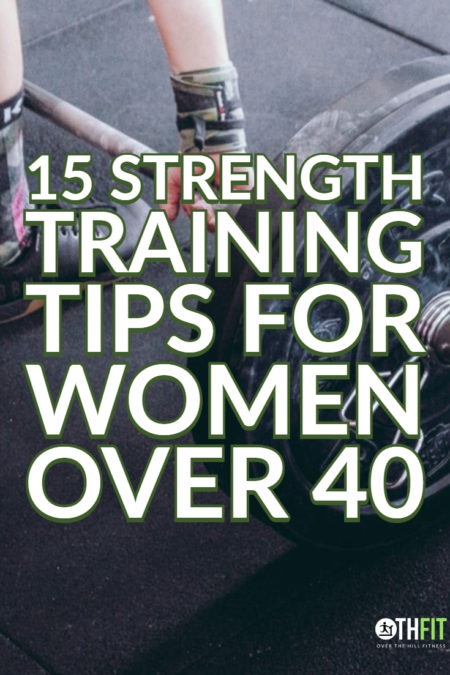
Strength Training Tips For Women Over 40
As my son loves to remind me, I am now in my 40s. I am also a woman with Polycystic Ovarian Syndrome (PCOS), diabetes, and some other health issues. Today I am going to share these strength training tips for women over 40.
Through working with my doctors and tons of research, I found that strength training (in conjunction with a healthful diet) provided me with the greatest success in weight loss, increased energy, pain relief, and decreases in health symptoms.
I didn’t find this out easily or quickly, I literally spent years trying so many different kinds of exercise, haven’t we all? Things flipped for me in 2014. I had a small stroke the year before and after I was pretty well recovered I decided that 2014 was the year I would change. I committed like I have never before and I was wildly successful.
By April of 2014, I had lost nearly 70 pounds, my body fat percentage was down over 20%, and I felt strong emotionally and physically. I remember catching a glimpse of myself walking with my husband in a store window, “Wow, I look like a normal person!”. My arms freely swung at my side, my posture wasn’t stooped from back pain, I looked strong and healthy and I felt amazing.
Unfortunately, later that summer things would change for me. I began having wracking pain throughout my body, I had to stop my weight training for fear that I would hurt myself if an episode hit while I was lifting. I continued my healthy eating and doing yoga and body weight exercises but the pain was soon too much.
After months of doctor’s visits and tests I was diagnosed with chronic Lyme disease and from December of 2014 until September of 2015 I was in bed any chance I had because I physically could not handle even sitting up straight. I was also taking rounds and rounds of super-strong antibiotics and antifungals that pretty much wiped out whatever energy I had and the side effects of which I will deal with for the rest of my life. There were days I thought I would die.
Finally, I chose to end the antibiotics and antifungals because I was legitimately scared they were killing me. I chose to continue taking a medication that is typically used to treat Fibromyalgia symptoms and that helped keep the pain in check but it came along with a lot of weight gain. I found myself back up at my all-time high weight of 235 at the end of 2017.
In March of 2018, I started my weight loss journey, no longer on the medication, and dedicated to a ketogenic lifestyle. I’ve lost 90 pounds so far and I’ve decided the time is right to get back into strength training.
I thought I would bring you along on this journey. To start out, I am going to focus on Strength Training, especially for older women. If you want to, check out the, “Who We Are” page to see my before and after pics, trust me, if I can do this, you can do this.
Strength Training Tips for Women Over 40
Strength training should be a part of every woman’s workout regimen. The benefits are many; shed body fat, build strength, fight against osteoporosis, reduce the risk of injury, burn more calories (your body will burn calories even after your workout!), reduce back pain, and relieving stress are just some of them.
Feel free to use what tips you need to as you need to. Your needs will certainly change as you get older so these are suggestions that can be tweaked for anyone over 40 and they will work for people who are younger but may have health issues.
It is important for you to do your strength training in an environment where you feel comfortable. If you do not have the equipment you need at home, check out this article on finding the perfect gym for your needs.
1. Warming up is extra-important.
I usually start by doing 20 minutes on a treadmill working up from a fairly slow pace to about 4mph. You want to break a light sweat but not do so much that you are left feeling weak or shaky.
Whatever activity it is should be one that doesn’t worsen any pain in your joints and instead warms them up to prepare you for your strength training. If, in your 30s you did a 10 minute warm-up, you should try and do a little bit longer, give some extra care to our joints and bones as they get older with us.
2. Work up to your high weight when doing your warm up sets.
When you begin your warm-up sets for your strength training exercises, feel free to do an extra set or two gradually increasing the weight slowly over them as opposed to doing fewer sets with quicker weight increases.
For instance, if goblet squats are first up on your agenda and you’re aiming for 35 pounds for a set of 10 reps. Here’s how you can warm-up: Warm-up set 1: bodyweight squat x 10 reps Warm-up set 2: 10 pounds x 8 reps Warm-up set 3: 20 pounds x 6 reps warm-up set 4: 30 pounds x 5 reps
You may want more (especially with exercises that allow you to handle more weight) or fewer sets (for exercises that require less weight, like a dumbbell shoulder press), but play with a gradual increase in weight and see how you feel.
I cannot stress how important it is that you are properly warmed up. Not only will you be able to perform better but you will also decrease your chances of getting hurt.
3. Make sure that the exercises and instruments used in your workout are good for your joints.
I recommend using dumbbell exercises, cable machines, bodyweight exercises, suspension trainer exercises, and even some weight machines. As we age these will allow us to use more natural grips and movement and put less stress on our joints. Of course, this goes for those of us with joint pain as well no matter what your age.
A key to this one is to not let anyone “gym shame” you. I’ve had workout partners that did more than just encourage me to do my best, I’ve had women really push me to do more than what I knew my body could handle without injury or try to shame me into not using machines a la, “Real lifters would never use those.”
Just remember that the goal here is your health and fitness and protecting your body so that you can continue to strength train. We are not trying to lift the heaviest or compete. (If you are, Awesome! but I still encourage you to make smart joint choices in your workouts!)
Also, make good use of the neutral grip, this is where your palms face each other, for upper body pressing and pulling exercises. Keep this in mind when selecting bars for cable machine pull-downs, seated rows, chin-ups, and dumbbell presses. Again, make adjustments based on what you are hearing from your body.
4. Modify barbell weight exercises.
This tip is about my personal favorite exercises, barbell exercises; the barbell squat, bench press, and deadlift. When I was at my peak performance, these were my absolute go-to exercises. Once the pain set in, they were the first things eliminated. As I am starting back I hope to work up to these again but in the meantime, I will avoid them or try to modify them to fit what I can physically accomplish NOW.
These lifts are amazing full-body workouts and they will make you feel accomplished and strong but my tip is to avoid or modify if they cause you joint pain or you don’t feel you can complete them safely.
The traditional squat can cause pain in your shoulders, or back. To alleviate this, you may be able to modify it by using the Safety Bar for squats. Not only is it easier on the shoulders, but due to the distribution of the weight, many people find this more comfortable for their knees and back. Here’s a video explaining the Safety Squat Bar.
Below is a video of the Trap Bar Deadlift.
Deadlift from the floor with a straight bar: some people just can’t do this comfortably, even if their form is stellar. A terrific alternative is a trap bar deadlift. If you have access to one and it has ‘high’ handles, as seen in the video below, try that variation first. The limited range of motion combined with the neutral grip makes this a great lift for many trainees.
Bench Press
Barbell bench press on a flat bench: some people experience shoulder pain with this lift. An alternative is simply using a bench set at a slight incline; sometimes this slight incline makes a huge difference because the angle is more shoulder friendly. If that’s still uncomfortable, stick to dumbbells.
Bottom line here: if you love the big barbell lifts and can perform them without issue, include them strategically. If not, use a similar variation of those lifts as shown above. If that still doesn’t work, train a similar movement with a different tool (e.g., goblet squats instead of barbell squats, or dumbbell bench press instead of with a barbell).
5. Determine the best combination of unilateral and bilateral lower body exercises.
Examples of unilateral exercises (when you perform one leg at a time) are split squats, lunges, etc. Bilateral lifts work both legs simultaneously (e.g., squat variations, leg press).
Some people can’t handle much unilateral training because it aggravates their knees, so they use predominantly bilateral lower body exercises in their workouts, I am one of them. But some find unilateral work makes their knees, hips, and back feel better than bilateral lifts.
This is why you need to be your own guru; listen to your body’s feedback. Do what works best for YOU. If an exercise causes pain or discomfort, swap it out for something else.
6. Always use proper form, and make every rep count.
So, you have your exercises ready to go and know what works best for your body. Ensure you’re using correct form on all exercises. If you’re not positive you’re doing a lift correctly, reduce the weight and focus on correct technique; slow down the movement a bit too, if that helps.
‘Make every rep count’: focus on every rep you perform; never rush through a set just to get it over with. The first rep of a set deserves every bit of focus and effort as the last. You should instill the ‘make every rep count’ mindset with the first warm-up set you perform.
As a note, it is very worth it to have a trainer ensure that you are using perfect form. This is one of the best ways to avoid an injury. This is especially true if you are modifying an exercise you previously have done. It never hurts to have someone just make sure we are doing things correctly.
7. Finish sets strong.
This is important for barbell lifts in particular. Recovery between workouts seems to take a bit longer as we get older, so one way to recover quicker is to stay away from failure when strength training. ‘Failure’ meaning pushing a set to the point when another rep isn’t physically possible with good form.
Stay away from failure by finishing each set strong; stop a set knowing you could complete 2-3 more reps with perfect form. This way you’re still training hard but you’re also a) leaving room for improvement the next workout and b) not digging too deep into recovery.
There are two exceptions to this rule:
It’s fine to occasionally push harder to test your strength, or for a fun challenge. Don’t do this often, and do not attempt another rep you’re not confident you can complete with proper form. You can push exercises that use dumbbells, your bodyweight, cable and other machines harder than barbell exercises. For example: pushing a set of push-ups to the max is safer than a set of barbell bench presses.
For deadlifts, I recommend a cushion of at least three reps. Because this exercise can typically handle a lot of weight, stop the set when you can complete at least three more solid reps. When deadlifting: dominate the weight and set. Finish strong.
8. Finish your workouts feeling strong and energized, not exhausted.
If you feel beat up or worn out after every strength training session, you pushed too hard. If you work hard and smart during your workouts and follow the tips above, you should complete a workout feeling great, not exhausted, most of the time.
By not crushing yourself with each workout, you’ll be able to come back next time and do a little better. Gradual progress is where the magic happens, and keeps you safe and healthy.
9. Use the workout split that best fits your training schedule and preferences.
Some people use strength training as a tool to complement other activities, so they only want to work out 2-3 times per week. For others, strength training may be their primary form of physical activity, so they work out four or more times per week.
Depending on how many days per week you want to strength train, some templates are better than others. Two workouts per week: stick with total body workouts three workouts per week: total body workouts or an upper/lower split four workouts per week: upper/lower split or a three-way split like legs/push/pull Five workouts per week: a three-way split like legs/push/pull or some other ‘split’ routine
Strength training splits defined: Total body workouts: as the name implies, you work your entire body in a single workout (e.g., goblet squats, push-ups, and dumbbell rows).Upper/lower split: one workout hits the muscles in your upper body (e.g., push-ups, dumbbell rows, lateral raises, face-pulls, biceps curls) and the other your lower body (e.g., goblet squat, lunges, leg curls).Legs/push/pull: the ‘legs’ workout, obviously, hits your legs. The ‘push’ workout would include exercises like push-ups, overhead presses, triceps extensions, etc. The ‘pull’ workout could include deadlift variations, rows, pull-ups, and biceps curls.
Not only is it important to consider your preferences and workout frequency, but keep in mind how you feel with any given strength training split. Whereas someone may feel excellent and recover without issue with three total body workouts per week, someone else may find they do better with a split so each muscle group and accompanying joints have longer to recover. You can also alternate splits for variety, and to see what works best for you.
10. Be willing to adapt on any given day.
Maybe you tweaked your back gardening or from winning a jousting tournament at your local Renaissance Festival (Totally not geeky if you also lift!). The next time you enter the gym you see trap bar deadlifts on the menu. As you perform the first warm-up set you notice your back just doesn’t feel ‘good.’ The smart thing to do is adapt; don’t push through the workout. Nix the deadlifts for the day and do something that doesn’t bother your back.
Perhaps you could try some unilateral work and back extensions. You can still train, but you need to adapt to the situation so you don’t turn the minor issue into a nagging injury.
Be smart: if something causes discomfort or pain despite using proper form, switch it out for something else until you feel better.
11. Know your limitations, and work around them.
Your anatomy, injury history, and other factors may affect your exercise selection. Don’t worry about the things you can’t do; focus exclusively on those you can, and get better at them. Maybe an old shoulder injury makes any overhead pushing and pulling impossible; you can still do inverted and dumbbell row variations, and push-up and dumbbell bench press variations. You can always do something, and it’s likely more than you realize.
12. Listen to your body; adjust when necessary.
If performing three total-body workouts per week leaves you feeling worn down, change things up. Try performing a workout every three days instead of every two, or switch to an upper/lower split so each muscle group gets more recovery time.
Likewise, maybe you love squatting with a heavy barbell on your back and pulling a loaded bar off the floor and can do so without issues and take offense at suggestions that you stop or ‘tone it down’; keep doing it. Pay attention to your body’s feedback, keep track of what you’re doing so you know what’s working and what isn’t. Then adjust if necessary.
This may be a day-to-day process. Do what you can on any given day; some days you may be able to improve your performance, other days (or even for extended periods) you may have to focus on maintenance. Some days you’ll feel amazing; others like a hot steamy pile of poo. And, please, do not get caught up in what other people are doing. This is your journey.
13. Consider including low-impact activities in your regimen.
Extra movement is always a good thing, and I suggest using primarily joint-friendly activities. Things like cycling, yoga, swimming (even ‘sprinting’ in a shallow pool is phenomenal exercise), and walking is excellent. I continue to walk on a treadmill and use yoga. Bicycling, which my husband can do, kills my knees. Also, keep tip #11 in mind: don’t worry about what you can’t do; focus on what you can.
14. Have fun.
Make sure this is something you ‘get to’ do instead of something you ‘have to’ do. Don’t underestimate the importance of enjoying your workouts. Strength training is something you should do for the rest of your life. For that to happen you must, at least for the most part, enjoy it.
Recruit a friend to work out with you or set some performance-oriented goals you want to achieve. Find a way to ensure it’s an activity you get to do. I can honestly say that when strength training was a routine part of my life, I truly enjoyed it.
15. You define what success looks like.
Whether you’re 25 or 65 you still want to look great, but as we get older we develop other ‘markers of success’ that weren’t necessarily priorities in our 20s and 30s: having more energy and less pain, relieving stress, doing something just for yourself, being able to perform daily tasks with greater ease, having stamina and endurance so you can tackle new adventures. Know what’s important to you, and what you want to accomplish with strength training.
There’s lots of information crammed in those 15 tips, but don’t feel overwhelmed. Strength training is a skill, and it’s a continuous learning process. Take your time, work at your own pace, listen to your body, and enjoy what you discover along the way.
Thanks For Reading
Thank you so much for taking the time to read this. I really hope that you found it useful. I would love to hear your thoughts in the comments below or on social media.
Pin On Pinterest

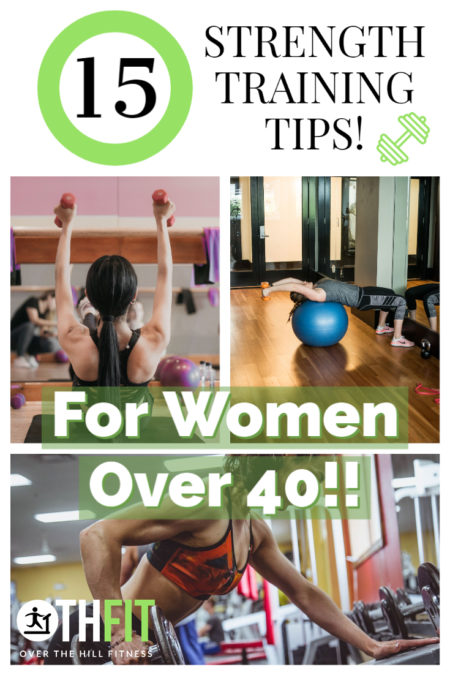

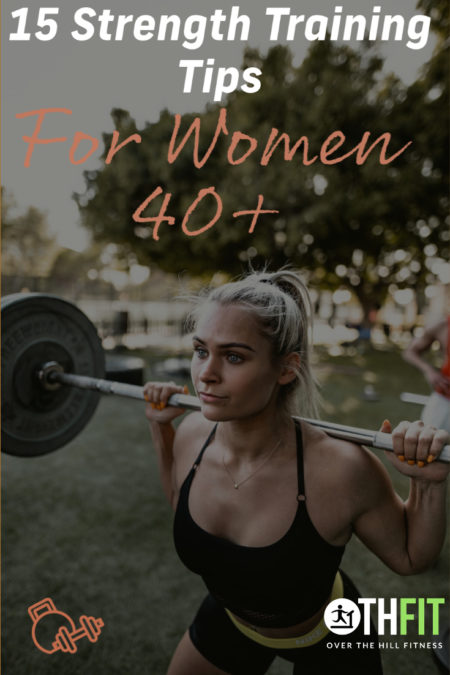
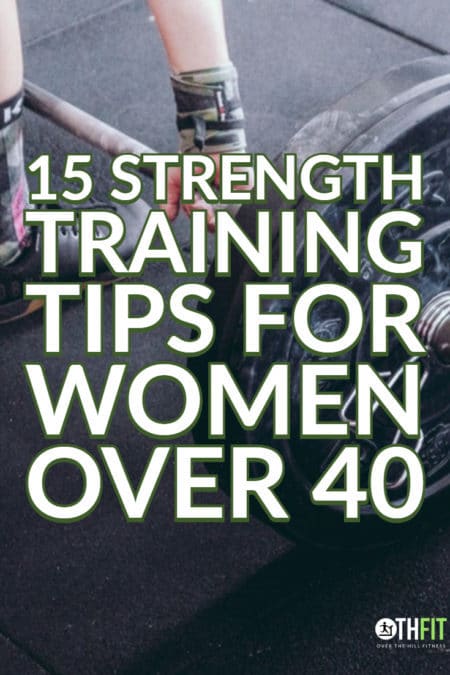
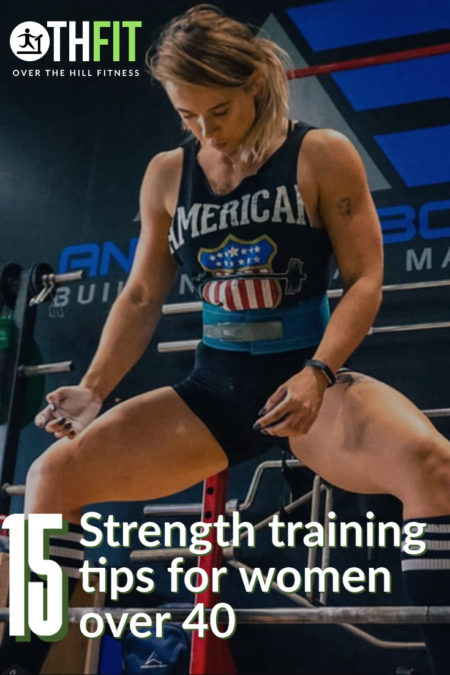






11 Comments
Emman Damian
These are great tips. It’s all about safety and having fun!
Summer
Thank you!
Gabriela
Such great tips.
Ana De- Jesus
Wow you have been through so much, I am so sorry to hear about your suffering. Well done you though for getting your life on track and for making changes that improved the quality of your life.
Summer
Thank you, I’m doing so much better now and just glad to be able to share some hope with others!
Angelika
You go girl! I’m not far behind! I’m in my mid 30s and your post is incredibly inspiring!
Summer
Thank you so much!
RG
OMG! I can only imagine what you been through but so glad you’re back to doing things that you enjoyed doing earlier 🙌👏😊
Summer
Thank you very much, I feel so much better now. ❤️
Tracy
great article. I had a similar experience and these are all great tips for someone to keep in mind.
Summer
Thank you so much!